|
When Kommer Kleijn (1959) was preparing to shoot his first
movie,
the Gulf War just started. The film industry in Belgium was in
ruins, and Kleijn’s moment seemed gone. Rather than letting it
frustrate
him, he decided to take advantage of the time to study visual effects,
animation and 3D. Now, his telephone doesn’t stop ringing, and he is
overwhelmed with constant requests for guidance on stereographic films.
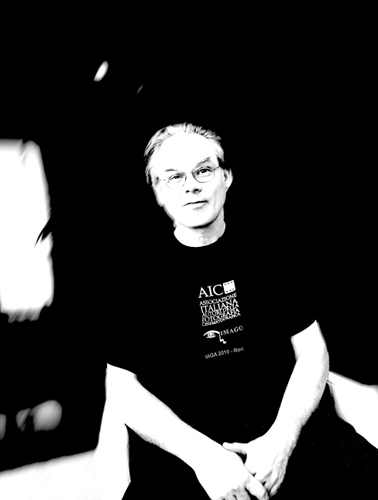
Director
of photography Kommer Kleijn S.B.C. (photo:
Bart van Broekhoven)
Director of Photography, VFX cameraman, stereographer and
technologic consultant; these are the self-ascribed qualifications that
Kommer Kleijn lists on his website, www.kommer.com. The list of
qualifications can easily be lengthened, to include Visual Effects
Cinematographer, Motion Control Cinematographer, Special and Large
Format Cinematography. By now, Kleijn‘s specialties are not to be
counted on one hand. The sprightly fifty year old sits relaxed in the
luxurious Sheraton Hotel in Schiphol. His striped jacket hangs casually
on a white designer chair. Very calm, he animatedly answers the
questions, while his blue eyes sparkle behind his glasses. One could
hardly imagine that his plane for Brussels leaves in two hours.
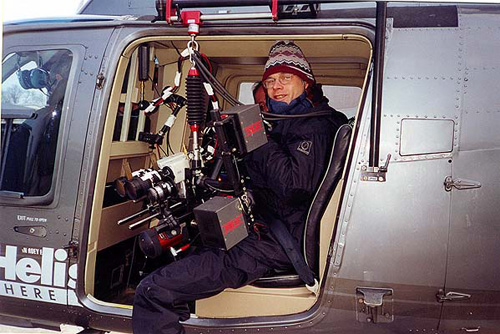
Director
of photography Kommer Kleijn S.B.C.
This
Belgian of Dutch origin has grown accustomed to a lot of travel in the
past few years. At the moment he divides his time between his work as
stereographer, teaching in two Belgian film academies and giving
stereography workshops to professionals around the world. He used to
travel around the world as a member of Technical Module of the EDCF
(European Digital Cinema Forum), and president of the technical
committee of Imago, the European Federation of Cinematographers.
Kleijn’s
expertise is in high demand. But it has not always been like this.
Belgium
After taking his last high
school exam in 1978, Kleijn signed up for the Film academy in
Amsterdam. “I was working with photography and I just didn’t want to
end up doing what my parents were doing. My mother is a pianist, my
father was an engineer. According to David Samuelson in his Hands-On
Manual for Cinematographers, a cameraman is half artist, half
technician”. That was exactly my case, so in retrospect I have made
them both happy”.
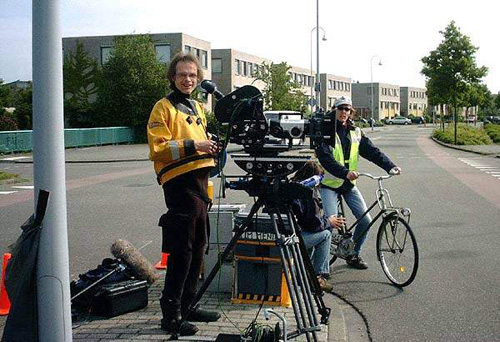
Shooting
3D on 35mm film for the Dutch pavillion on the Floriade universal expo
2002
He
was not accepted In Amsterdam. “I was probably talking gibberish, I was
so nervous.” Taking his sister´s advice, he turns to Belgium for
answers, where he takes admissions exams in two film academies. He is
accepted in to both of them. His preference goes to the French language
academy
INSAS (Institut National des Arts de Spectacle et Techniques de
Diffusion) in Brussels, because the work of his teachers Ghislain
Cloquet ASC and Charlie Van Damme AFC appeals to him. “I totally
bloomed in Belgium. During my studies I made very profound friendships.
Afterwards, I never felt the need to leave the country”.
Gulf War
After the academy, Kleijn
follows the classic road of clapper loader, (among others “Een Vlucht
Regenwulpen" and "Menuet"), first assistant, cameraman for thirty short
films and cameraman second unit. Logically, these should lead to jobs
as DoP of long films. But it doesn’t work that way. The Gulf War starts
and the film industry in Belgium is in ruins. To be able to take care
of his needs, Kleijn, -always interested in tele- and data
communication, goes to work part time in a computer shop. He also makes
corporate films and commercials (VFX and DoP), and expands his
technical knowledge independently. He specializes in visual effects,
blue screen and composition photography. Also stop motion and motion
control have his attention, just like stereography and large formats,
like IMAX.
Thanks to his technical and electronic background, he also gets
involved in the development of new camera systems. He conceived and
designed the “Animoko”. Specialized in stop motion. “Animoko” is the
abbreviation of Animation Motion Control, actually Animoco, but I
changed the c into a k because of my name.”

Kommer
Kleijn S.B.C. with his Animoko Motion Control Rig
After the Gulf War the film industry in Belgium recovers very
gradually. “For about six to seven years there was no place for a
"jeune
premier", as we call them. The producers first asked the experienced
cameramen who were sitting on the sidelines twiddling their thumbs”.
Kleijn´s moment to debut as a film DoP seemed over. The corporate films
and commercials that he made were not satisfying him. “I was looking
for challenges, and I ended up with increasingly complex technical
things. That is how I became a man of many specialties. I got the
reputation from producers, who thought, “if you get a script and think:
how in God’s name am I supposed to do this? Call Kommer!” I got all
kind of weird things on my plate.
3D
That is also how he got his first job
in 3D, in 1998. A Japanese amusement park commissioned him for Alice in
Digital Land; an interactive 3D, image synthesis, virtual reality,
live-action 26 minute film. The audience could vote 10 different times
about how the story should go on. As no 3D camara is available, Kleijn
starts to design a 3D camera himself, in
cooperation with a company, based on cube cameras from the medical
world, 7.7 Fuji zoom lenses and a mechanical coupled focus. “The first
films all had a green screen, you were then able to make corrections.
We worked with a virtual studio. The sets were virtual, the leading
actors real, the co-stars in CGI/image synthesis. It was a fantastic
laboratory experiment.”
More 3D projects followed, among them a
corporate film for Gasunie and a short film for the Dutch pavilion at
the Floriade. Kleijn was also asked, as a stereographer, to supervise
on a
Russian film. It was a top production, with a crew of 150 people, but
after three days it had fallen apart. Nowadays his telephone is red-hot
for stereographic commissions, which continues to amaze him: “For
twelve years I made one 3D-film a year for a couple of madmen. Now it
is surprisingly trendy. All of a sudden it turns out I can do something
that almost
no one else can do”.
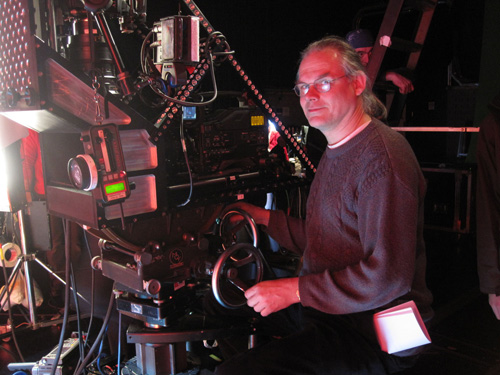
Director
of photography Kommer Kleijn S.B.C. shooting a 3D commercial
“In my work as a stereographer, my experience as a cameraman
is a
huge advantage. As stereographer and cameraman, you don’t only take
into account the fact that the audience shouldn’t get a headache, but
alsothat a story needs to be told. Furthermore, you understand
the
relationships on the set: in disagreements the director is the boss,
then the cameraman and finally the stereographer. People that have been
educated only as a stereographer are not always aware of these
differences. You also know that you have to find a way to work fast, so
that you are not fiddling for half an hour, otherwise the director and
the actors go insane. That is the most important part of 3D, to serve
both the film and the story, and to do it in smooth cooperation with
the rest of the crew. You also shouldn’t forget that ultimately
it is all about storytelling fo the audience and giving them a good
experience.”
Mister Frame Rate
Since 2007 Kleijn
has been a member of the Imago technical committee. Among other
things, in this capacity, he has kept himself intensively busy and
successful with the implementation of new standard frame rates
in digital cinema projectors. “Frame rates have really become a thing
for me. At the SMPTE in America I am often nicknamed Mr. Frame
Rate". I am devoted to
projection. My love for cinema begins in the theatre. I have always
been magically in love with the cinema, and the projector is a
key
element. Because in the end, that is the thing: you can make the nicest
pictures in the world as a cameraman, but if the projector can not
reproduce them, then you have nothing.”
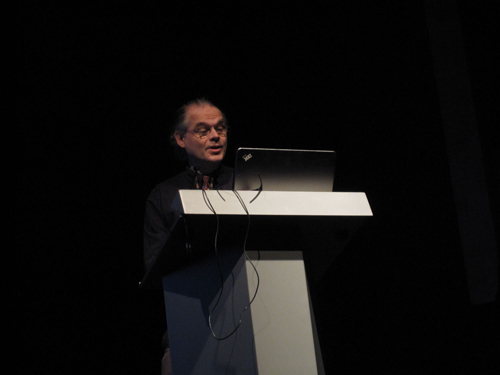
<>Director
of photography Kommer Kleijn S.B.C.
In
his student days, Kleijn was already ‘chief projectionist’ in a small
theatre where films were shown twice a week. “Cinema projection is
almost
sacred to me. Since 2002 I have had a 3D projector at home, a huge
mastodont, imported from Boston”. Electronic projection has always
indirectly interested him. But as soon as the discourse about digital
projection begins, he cannot follow the developments from the
sidelines. “The ITU (International Telecommunication Union) proposed in
2002 to use HDTV-standards in cinemas. The whole camera world tumbled
over; people realized: something is going to happen and we have to do
something about it, otherwise it is going to go wrong. I followed it
very closely and I signed against the ITU proposal.”
Blunder
“The guys of the ASC (American Society of
Cinematographers) had lobbied for High Temporal Resolution; a
possibility for higher frame velocity in reproduction. Because 24
frames per second are of course unsufficient; a standard created around
1930, because the machines then couldn’t work faster”.
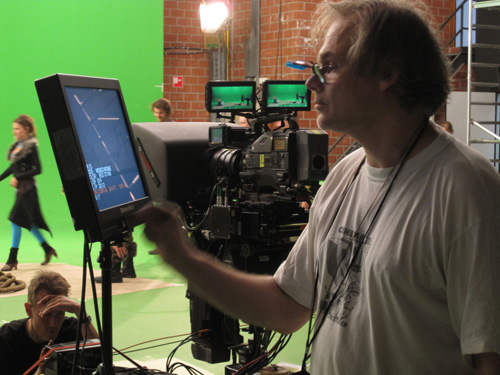
Director
of photography Kommer Kleijn S.B.C.
shooting 3D for a new Futuroscope Poitiers attraction
A
DCI (Digital Cinema Initiatives) –specification, is coming out, with
a new possible velocity of 48 a High Temporal Resolution. “How did they
get there?”,
wonders Kleijn. In an IBC-conference he walks over to meet participants
of DCI and asks them the reason. Their answers do not satisfy
him. “48 can be easily divided in 2, and then you get 24, they said".
So
if you film in 48 and throw away one out of two frames, then you can
still show it in a 24-cinema. But if you give me a camera that rolls
on 48, then I want to use the new possibilities in storytelling, and
then that will not work when seen at 24. So the possibility to reduce
to 24 is not actually really interesting. Finally, the 48 proposal was
a huge
blunder, because it also doesn’t work properly on DVD and blue ray.
Seven
American studios and the ASC had gone wrong.”
Digital Cinema Standardisation
Kleijn wants to
avoid the fixing of High Temporal Resolution on 48 at all costs.
Because he has become a member of a number of influential guilds, his
ideas are becoming increasingly heard. He receives an invitation to
participate at the Technical Module of the EDCF, an input organ for the
SMPTE (Society of Motion Picture and Television
Engineers) DC28- committee, which had to define the standard for the
future digital film industry and projection. Unexpectedly he gets
involved with Imago, when he accompanies André Goeffers, president of
SBC (Belgian Society of Cinematographers), to a meeting in Paris.
Adreas Fischer-Hansen is then elected president and makes his vision of
the future known. One of his objectives is: Getting involved in digital
standardization. When he asks who would want to do this, Kleijn only
has to raise his hand. “I had already noticed that on my own,
changing the 48 frame rate was not going to work, but from inside
Imago, with the representation of 1400 cameramen, maybe it could. I
said immediately, 48 should become 60.”
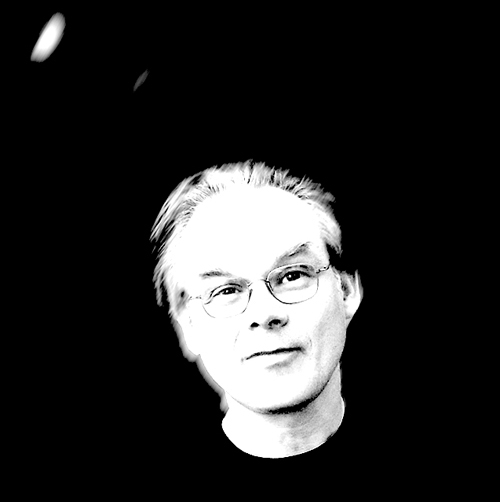
Director
of photography Kommer Kleijn S.B.C. (photo:
Bart van Broekhoven)
Through a presentation about frame rates, during a meeting of
the
DC28-committee in Amsterdam, Kleijn gets very close to the fire. He
proposed to apply more flexibility in the new standard for digital
projection. “The whole standardization committee sat there yawning,
and afterwards it was very quiet. The Chairwoman, Wendy Aylsworth, now
Vice President of Technology by Warner Bros and Engineering Vice
President of SMPTE, suggested that a work group should be established.
“Who wants to volunteer?”, she asked. Me, of course. “Who is a
volunteer for Charing the group?” Again, silence. Then I raised my hand
again. All at once I was the Chairman of a workgroup of the
DC28-technical committee, and I was not even a member of the SMPTE yet.”
Bert Easey Technical Achievement Award
In
December 2009, Kleijn received the prestigious ‘Bert Easey Technical
Achievement Award’ from the British Society of Cinematographers. It was
in appreciation for his efforts that lead to the addition of the 60 fps
frame
rate in the international standard for digital projection. Even though
it has taken some years, finally, there are 6 standardized velocities
now:
24, 25, 30, 48, 50 and 60. “30 has been incorporated because in 3D
strobing bothers much more than in 2D. 48 is still there because you
need it to be able to project 24 in stereo. 50 to be able to see in 3D
in
25. The whole stereo community is of course interested in 60 frames per
second. The capacity of the machines to work with 30 frames per eye is
peanuts, you could say, but it does help. And if you shoot a film in
60, then you should also be able to show the 2D-version. For this
purpose you need 30. In the new standard 3D has gotten a solid place.
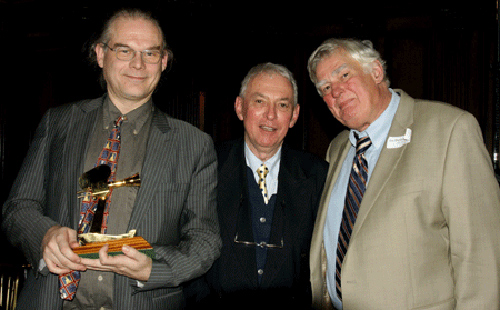
Kommer
Kleijn with Imago president Nigel Walters en B.S.C. member Joe Dunton
Does
he secretly hope to be asked to be the DoP of a feature film, now that
digital projection is on a good path? “I will always be very much in
love with the idea. But as a man of fifty without a lot of experience
in
that terrain, it is not very likely that I will be asked. Anyway,
I will not be upset about it, if that film
opportunity does not come about. Who knows, I might very soon make one
as a stereographer or 3d-consultant. Then I will assist a colleague,
which is also fine by me. Go with the flow.”
www.kommer.com
www.kommer.com/animoko
Translation from Dutch to English: Martijn Kraal
 |











